13 Expert Tips for Ordering the Best Fish at a Seafood Restaurant
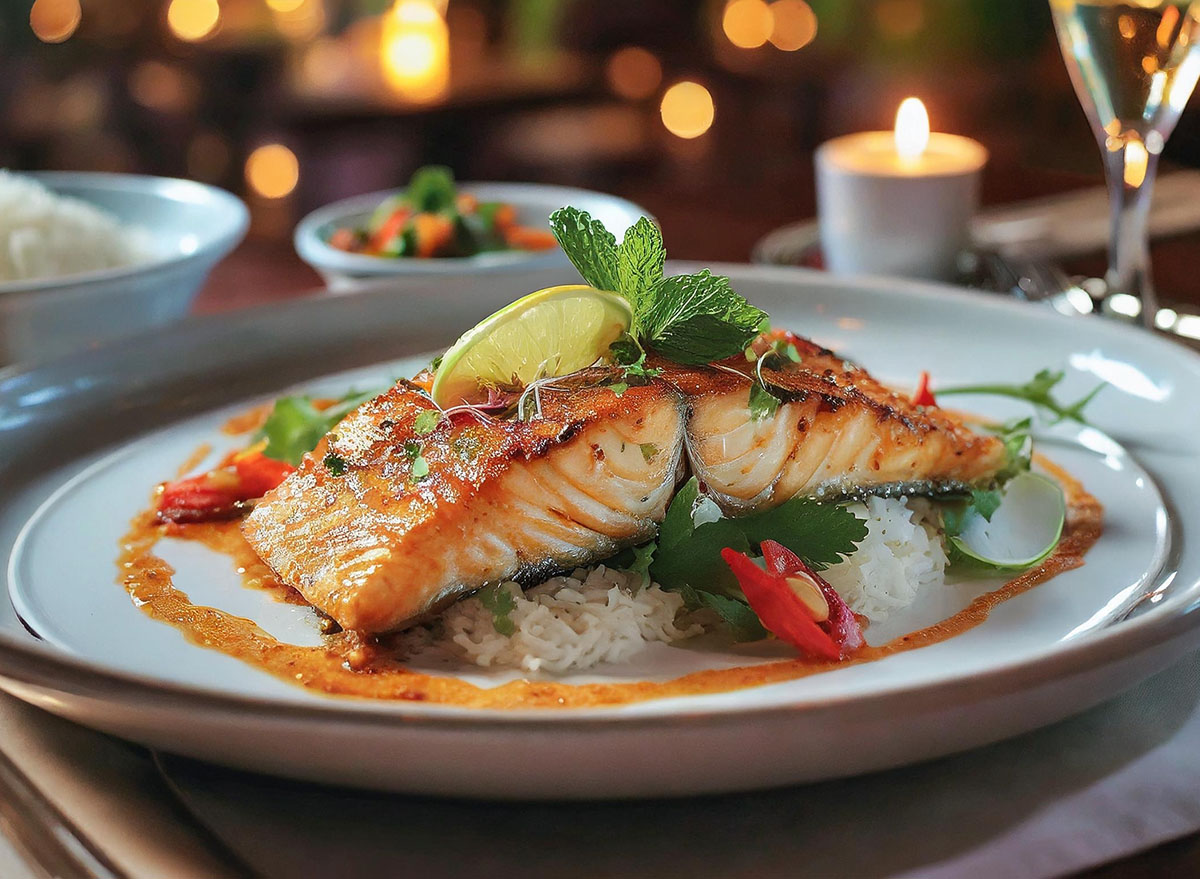
Gone are the days when a diner needed to be able to smell the ocean air to depend on getting fresh seafood in a restaurant. FedEx has become everyone's fishmonger, shipping seafood from the coasts to anywhere in America overnight for the right price. However, that doesn't mean that every restaurant is serving the freshest seafood all the time.
In his 2000 book "Kitchen Confidential," Anthony Bourdain famously advised against ordering fish on Mondays, reasoning that since New York City fish markets were closed on the weekends, the fish on the specials board on Monday might well be left over from Friday. He later recanted that advice in the face of improving logistics options and kitchen seafood handling protocols.
One way to ensure the freshest seafood possible might seem counterintuitive to diners hoping to enjoy a quiet seafood dinner without a wait. A packed restaurant can lead to a better overall dining experience. Michael Morales, chef/partner at Sunda New Asian in Nashville, Tenn., puts it succinctly. "For seafood, I always like going to restaurants that are busy. It guarantees that they are selling their product, so they get a steady flow of deliveries for seafood."
Michael Nelson, the executive chef at the beloved French Quarter seafood emporium GW Fins in New Orleans, concurs. "If you walk into a seafood restaurant and it's empty, turn around. To serve fresh seafood you need to be busy and constantly turning over fresh product. Also, if you walk into a restaurant and it has a distinct seafood odor, you may want to think twice. Typically, older seafood will have that strong seafood smell associated with it."
For more specific advice on how to have the best seafood restaurant meals, we reached out to some experts in the field. (Or rather, in the sea.) Here's what they had to say.
Let your nose be your guide.

Even if the dining room is busy, you can still rely on your sniffer for important clues, says Aaron Watson, executive chef at Nerai in New York City. "Some people are hesitant to eat fish and seafood for fear that 'it's too fishy.' If the product is fresh, it shouldn't have a super strong taste or smell. Even still, there are a variety of fish that range from mild to rich in flavor. Talk to your waiter about your preferences and they should be able to guide you in the right direction."
Local is best.
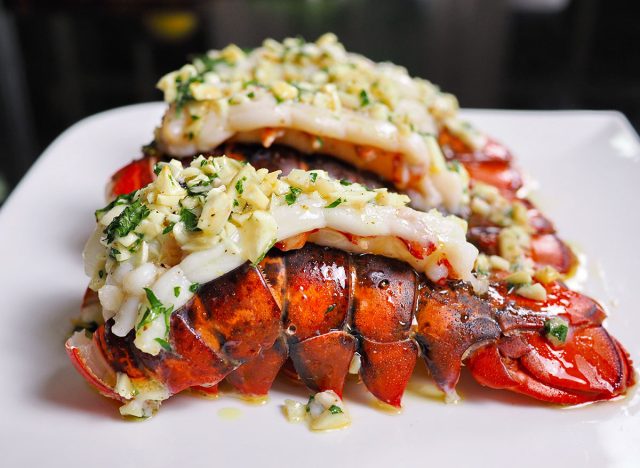
If you're fortunate enough to live or visit someplace that has access to dayboat fisherman, take advantage of your luck whenever possible. Jeff Josenhans is the InterContinental San Diego's director of food and beverage, including the California-Baja influenced signature restaurant Vistal. He's also an avid fisherman, so he knows what swims in the local waters.
"Here's my advice—try local and ask where your seafood comes from. In fact, demand it," Josenhans says. "If your seafood is being shipped across the globe to get to you, you can likely suspect an issue there. It's not going to be as fresh as fish caught in your area, and from an ethical perspective you are running into problems. So what does that all mean at the restaurant or grocery store? It means tuna is on the menu if you live in Southern California, and it's tuna season, but salmon is going to be a questionable choice."
He advises, "Try a smaller fish instead of the grocery store-size filets you are used to seeing, and try a fish that is local to your area. Google can go a long way here. More trout if you live in Montana, more rockfish if you live on the Pacific Coast, more abundant pelagic fish like dorado or the lesser utilized barracuda if you live in the tropics."
Chef, TV host, and best-selling author Dennis Prescott's newest book "Cook with Confidence" is filled with advice on how to choose, source, and cook seamless, delicious, sustainably sourced seafood dishes. He suggests, "When ordering seafood, the very first thing I ask is what is locally available. Could be lobster on the East Coast, shrimp, or stone crab in the South, oysters on the West Coast—I want to eat the best of the region, when I'm in the region."
Fresh is best, but frozen is isn't necessarily a bad thing.
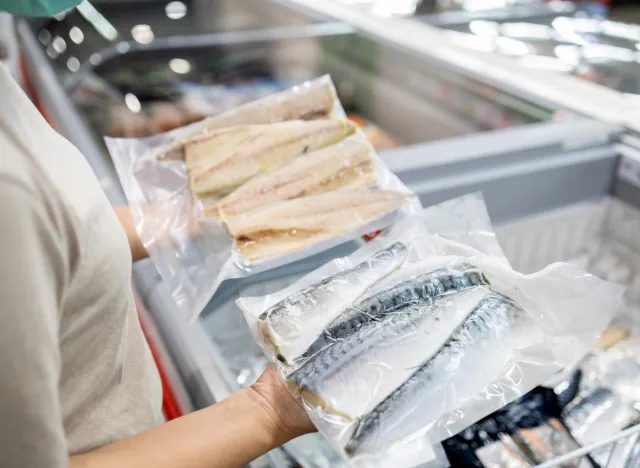
Often, seafood restaurants and markets advertise their products as "never frozen," but when you consider that some shrimp boats are away from port for weeks at a time, you would hope that their catch would be frozen at some point.
William Dissen is the chef/owner at The Market Place in Asheville, N.C., and he's not worried about frozen seafood as long as it is handled well. "Frozen isn't something to be afraid of," he advises. "Flash-freezing at sea, as long as it is defrosted properly, can be of equal quality. In general, fresh is best, but if you don't have access to dayboat fresh fish, frozen is the best way to have access to delicious fish. If I'm getting wild-caught salmon, nine out of ten times it's frozen. It's like Ben Franklin said, 'Guests, like fish, begin to smell after three days.'"
Embrace the familiar if you're nervous.
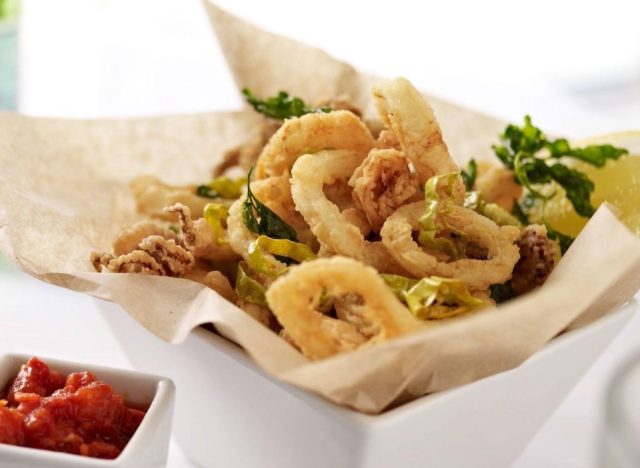
If you've only ordered seafood from chain restaurants, some of the species names on a more upscale menu might be unfamiliar. That's OK, a great restaurant should make suggestions to help make you more comfortable. At Joe Muer Seafood in Nashville, Tenn., Marino Bianchi runs the kitchen and is happy to offer suggestions to seafood newbies. "For beginners, a seafood menu can be daunting but there is typically always something approachable on the menu. I suggest trying calamari—we get ours from Town Dock in Rhode Island or our mussels that are served with a beautiful sauce of our master chef spice, saffron, cream and grilled sourdough."
As founder of QED Hospitality, Brian Landry oversees restaurants in New Orleans and Nashville, and he has some great advice for timid orderers. "Shrimp is a gateway seafood," Landry says. "Shrimp are mild, sweet, and versatile and can be used in a myriad of preparations. Starting with shrimp as an introduction to seafood is always a safe bet. Another tip is to look for ingredients, flavors, or cooking methods that you already enjoy. If you typically order steak while dining out, try ordering a grilled fish with a familiar sauce or side. If fried chicken is your go-to dish, then try fried fish in its place. It is hard to beat crispy fried fish with lemon and Tabasco!"
Don't fear the unfamiliar.
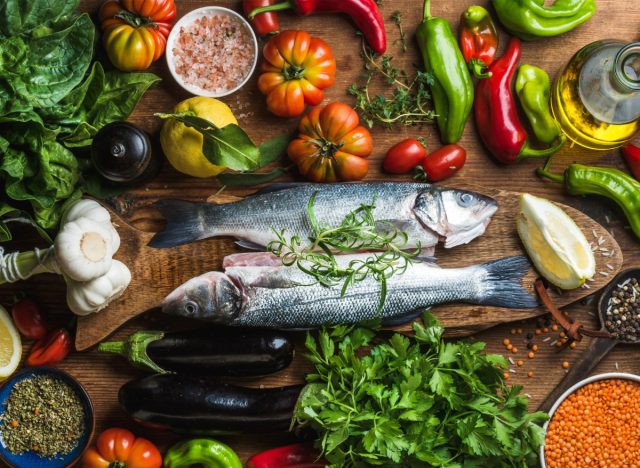
The previous advice notwithstanding, the hidden world under the sea is meant to be mysterious sometimes, so don't fear the unknown. Carl Carrion is the executive chef Shell & Bones Oyster Bar and Grill in New Haven, Conn., and recommends taking the leap of faith. "Don't be afraid to try something new! Many restaurants will have a few things on the menu you've never eaten before—it makes the experience a bit more fun to get out of your comfort zone."
Josenhans warns of actual ecological danger if diners order the same things over and over. "People tend to order what they are comfortable with when it comes to seafood, which causes a virtual Pandora's box of problems for both consumers and the commercial fish market—because people are comfortable with what people have been told exists. A very small percentage of the population actually gets onto or into the ocean enough to understand what's there."
He continues, "Growing up fishing off the coast of California, I was always perplexed at the fact that I never saw all the types of fish the fishing boats were catching on menus in California restaurants. Thousands of fish species that are found close to shore have been virtually non-existent in restaurants up until recently. There are many reasons for this—it's cheaper to source seafood from countries with lower standards of living and labor costs, it's easier to break down larger fish into smaller packaged filets than smaller fish, and restaurants want to sell what the consumers have been marketed to so that they feel confident they can sell them without the burden of educating their customers."
Don't skip the sauce.
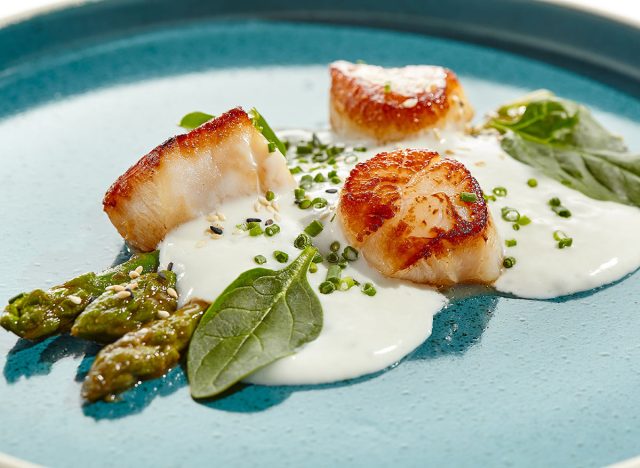
Serving sauce with fish is a classic presentation, particularly in Continental cuisine, although American diners might not be as accustomed to accenting their fish with anything other than Old Bay. Bianchi advises, "I love pairing fish with different homemade sauces because the flavor of each fish is drastically different. For our Tristan Tails we serve a butter sauce of sherry, lemon and brandy but if you are getting the halibut I recommend a Vichyssoise and for the Crab Stuffed Flounder I recommend Stone Ground Mustard Beurre Blanc."
Trust the chef.

Contrary to some television and film depictions of dictatorial chefs, in most cases, the kitchen really does want to make their diners happy. Seek the staff's advice either directly or through your server and follow accordingly. Austin Yancey is the corporate executive chef of Urban Wren in Greenville, S.C. He suggests you put yourself in the hands of the chef.
"When I dine at a seafood-heavy restaurant for the first time, my number one rule is to always trust the chef," says Yancey. "My brothers and sisters who share a love for the culinary world as I do spend their careers pursuing freshness along with quality, sustainability, and locally sourced ingredients, all the while honing and perfecting their craft. I put my faith in the professionals who are guaranteed to point you in the right direction, time and time again. As for myself, I love trying new food! But if you have a favorite or alternatively, a downright 'no,' you don't have to stray away from your comfort zone—eat what you like."
He continues, "If you're up for the challenge, I always encourage people to try at least one new dish to discover new preparations and flavors, whether it be raw oysters for the first time or a take on a classic South American dish like kingfish ceviche, you never know when you might find your new favorite!"
Prescott also enjoys letting the staff assist in planning his meals. "Chefs love to help diners make great choices. The first thing I do when I go to a restaurant is to scan the menu for what I already know I love, and also, what I've not yet tried. Then I ask the staff which dishes they're especially fired up about."
Look for specifics on the menu.
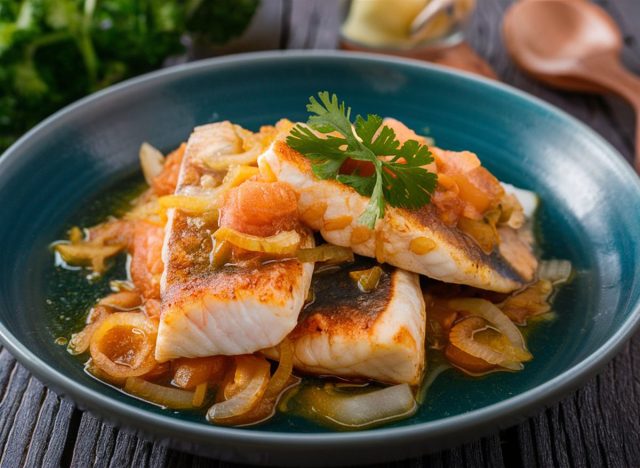
The titles of specific dishes on a seafood menu can offer a hint about how involved the kitchen was in sourcing the product. Bianchi reveals, "In general, if the chef or restaurant has a specific name of the fish on their menu, they take more pride in the finish and have knowledge of how it was sourced (who the fishmonger is, etc.). For example, a menu can read seared salmon or grilled snapper compared to Block Island Swordfish or George Banks Scallops."
Always check out the specials board.

Here's where many chefs veer away from Bourdain's advice. At Charleston, S.C.'s Darling Oyster Bar, Derick Wade is the executive chef serving up sage advice and delicious seafood. "As someone who is heavily involved in the seafood space in Charleston, one big piece of advice I share with friends and family visiting a seafood-forward restaurant is to always check the specials boards," Wade says.
"As a chef myself, I know that this is where you can usually find the new menu additions and 'fresh catch' offerings, as they tend to be best enjoyed the same day restaurants get the deliveries in." This also holds true for shellfish, Wade says. "Alternatively, if you're looking to tip-toe into the world of raw seafood per se, speak to the guys helming the raw bar, they can point you in the right direction."
Nerai's Watson wants to embolden diners to go for it. "Don't be afraid to try the specials! Seafood specials sometimes get a bad reputation as throwaway dishes or old products. However, at a nice seafood restaurant, chances are they have a great relationship with their fish purveyors who will give them the inside scoop about a fresh catch, or specialty items that have limited availability that can be run as additions to the regular menu."
Paul Niedermann is the chef at The Jupiter Grill in Jupiter, Fla., and he reveals a motivation for putting a special dish on the menu that some diners might not think of—the chance to test and taste a new dish in advance.
"There are many factors as to why a fish is on special," Niedermann says. "The #1 reason in my opinion is that I'm working on a new dish, and I'm looking for feedback from our guests. It's also to break up the monotony of the menu when you don't change it so often. For me, it is an avenue of evolving my menus and pushing to make the dishes better… not just to move and rotate product."
Find out where your seafood comes from.
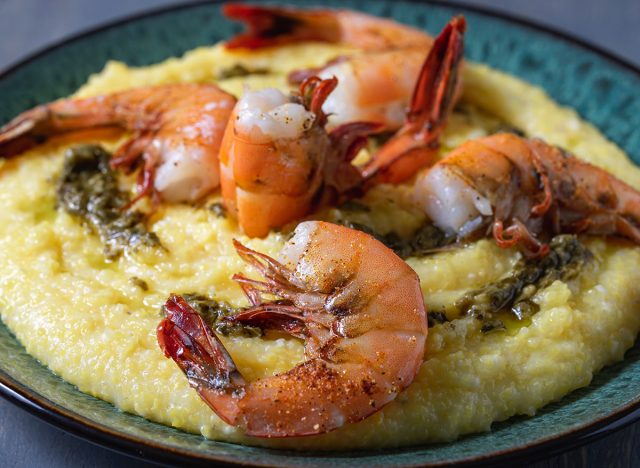
Because the ocean is so vast, it seems like there would be plenty of fish in the sea, but that's not always the case. Even more problematically, measuring fish populations and tracking harvesting practices can be difficult. So ask!
Chef Brian Okada is vice president of culinary and brand development at King's Seafood Company, a family-owned and -operated restaurant group based in California. The company focuses on sourcing sustainable seafood whenever possible and promotes aquaculture as the most responsible option for protecting the fish population while still supplying product for their restaurants. "Many factors affect seafood quality. Where it came from and how it was handled are two of the biggest," says Okada. "Before ordering, look at the menu and ask your server this question: where did the product come from?"
Prescott suggests, "Find out where chefs buy their seafood, and what they're using on menus. Look for industry stamps of approval from organizations like the Monterey Bay Aquarium's Seafood Watch to ensure the seafood is sourced correctly, transparently, and sustainably."
Dissen has been an ambassador for Seafood Watch and encourages diners to check the organization's website for the green/yellow/red indications of whether a fish is preferable to eat. "The world is expanding and overfishing is a real concern. We've eaten bluefin tuna almost to extinction. There are plenty of other fish in the sea that are equally delicious, but the public needs education. When I added a bycatch fish named sheepshead to my menu, diners thought that there would literally be a pan-roasted sheep's head on a plate!"
Be wary of "farm-raised" seafood.
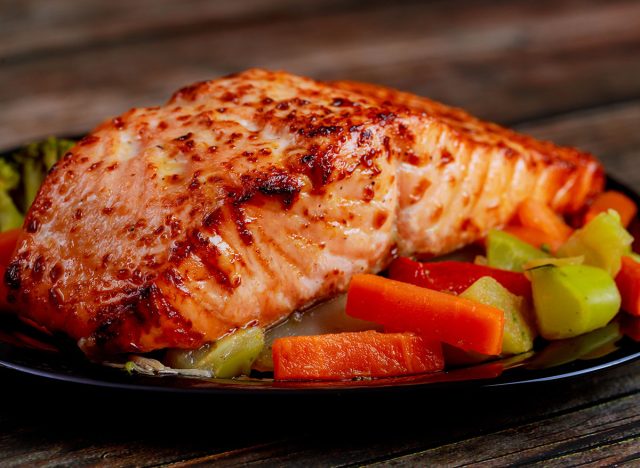
Not everyone believes in aquaculture as the only and best solution to sourcing sustainable seafood. Says Niedermann, "Wild fish is always a better option. The wild-caught will have more fat in the meat and much better taste and texture. Farm-raised isn't a bad option if they are using sustainable practices and there are budget constraints. If you can, I would always lean towards the wild-caught."
Dissen again encourages diners to consult seafoodwatch.org from the table on their phones. "A lot of fish are not farmed in the proper environment. They can be crammed into nets in the open sea and fed hormones and antibiotics. Look them up and understand the farming methods."
Know what's in season.
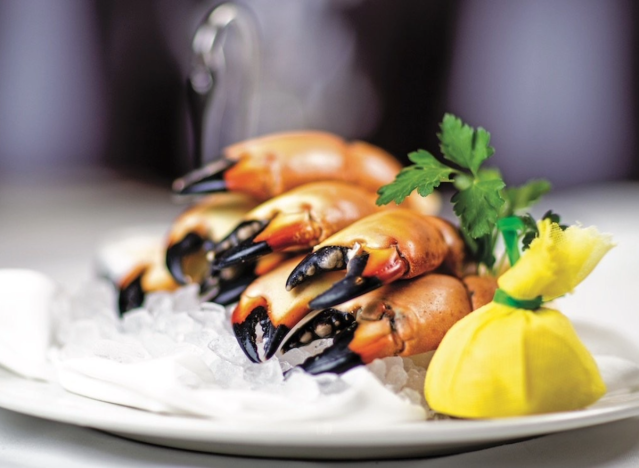
Ordering the same fish every time you visit a seafood restaurant is just plain boring, plus you're probably missing out on seasonal treats while encouraging overfishing or questionable practices. Don't do that.
Niedermann explains, "Just like produce, there are seasons for seafood. In South Florida, a local favorite, stone crab claws, are only available from October to May. Some fish are protected by season like grouper and red snapper which have times during the year when they cannot be caught so they can reproduce. My suggestion is to just eat what is abundant and you won't go wrong."
Bianchi again recommends you lean on your server for timely advice. "The best way to get the freshest item on the menu is to ask your server what fish is in season at the time of dining. Right now, we are getting Alaskan halibut from Kodiak Alaska with next-day delivery. We partnered with a fishmonger who only selects fish from day boat operators so that we are ensuring the freshest halibut possible."
Don't forget about oysters—even in months without an "R."
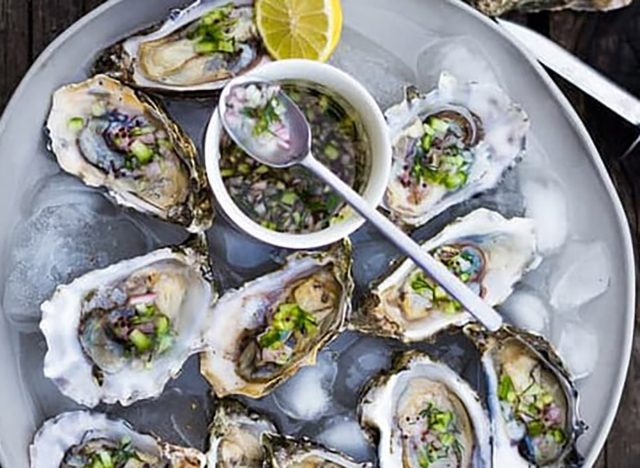
That old advice not to consume oysters during warm weather—basically, May through August, or any month without an "R" in its name—stretches back to the days before refrigerated trucks, so don't worry much about that anymore. Plus, you can always trust your nose, right?
Prescott is a big fan. "In search of sustainable goodness, a great choice is oysters, as they're among the most sustainable shellfish we can consume. Oysters are one of the best ways to truly experience merroir, or 'taste of place.' Every oyster is unique, its flavor highly affected by the water from bay to bay. They're a saltwater bivalve mollusk and brilliant at filtering dirty seawater (adult oysters can filter up to fifty-five quarts of water a day). They play a vital role in keeping seawater balanced so other species can thrive, capture carbon dioxide, and extra nitrogen from waterways. Oysters are amazing."
Kristen Shirley is an oyster and caviar expert for the online luxury guide La Patalia. She prefers to run the gamut when it comes to ordering oysters. "I like to order several different types of oysters to try. I always order at least two of each kind. First, try each oyster to get a frame of reference, then revisit them and really delve into the nuances." But she does have a pet peeve that she will secretly shame you for if she sees you doing it in a restaurant. "I hate seeing people put red onion on caviar and horseradish or Tabasco on oysters. These are very expensive and delicate foods, so if you put these accouterments on them, they will overpower the flavors you're paying so much money for."









